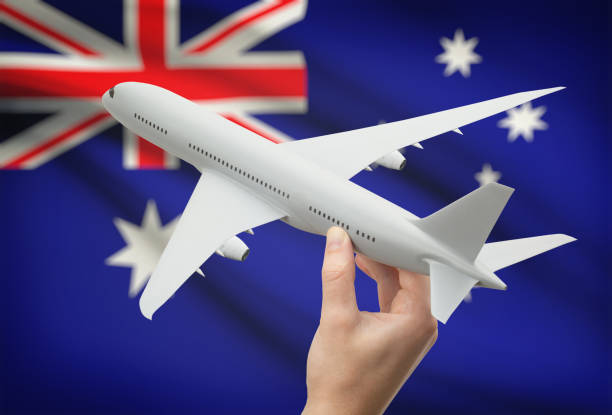Please note that the information we provide in this article about bridging visas in Australia is current as of the date of publication, and the DHA regularly updates rules and regulations. Kindly ensure that you check the official updates before making any decisions, or speak with an immigration lawyer for the most up-to-date information, as laws and conditions are subject to change.
As the name suggests, bridging visas in Australia bridge the gap between your current visa status and your application for a new one. This type of visa allows you to stay in Australia lawfully while the DHA proceeds with your new visa application and, thus, preventing an unlawful stay or the need to leave temporarily.
Another significant purpose of bridging visas is that it prevents potential disruptions to non-citizen’s personal and professional life in Australia. Thus, providing stability and continuity for both non-citizens and the Australian government is one of the aims of this type of visa.
The latest update for this visa as of August 2022 is that applications for bridging visas in Australia can only be filed via ImmiAccount or the online webform.
There are three types of bridging visas in Australia:
Bridging Visas in Australia: Bridging Visa A (BVA)
Subclass 010 or Bridging Visa A is a temporary visa that lets you stay in Australia after your current substantive visa expires and while you make your new application for a substantive visa. Moreover, the cost of this visa is free.
But what’s a substantive visa? The Australian government offers a form of visa known as a substantive visa to people who want to travel to or remain in the nation for a specific reason. This could be for purposes involving family, career, or education. Contrarily, this is different from a bridging visa because the latter doesn’t authorise a specific stay purpose.
Examples of substantive visa are:
- Temporary skilled work visas – Attracting skilled professionals to fill workforce gaps.
- Student visas – Enabling international students to pursue education in Australia.
- Partner visas – Allowing individuals to reunite with partners residing in Australia.
- Tourist visas – Permitting short-term visits for leisure or business purposes.
- Permanent residency visas – Granting long-term residency rights with potential pathways to citizenship.
BVA Checklist:
To assist you in applying for a BVA, here’s a general checklist for your reference:
- You are currently holding a substantive visa.
- Be in Australia when you apply.
- A pending application for a new substantive visa or an application for judicial review of a decision concerning your substantive visa application.
- Apply within the prescribed timeframe.
- Meet the character requirements.
- Identity documents, such as your passport and national identity card.
- Proof of hardship
- Translate (if non-English) and scan your documents in colour.
- Fill out Form 1005 and attach it to your application.
- Submit your application through the webform or ImmiAccount.
Bridging Visas in Australia: Bridging Visa B (BVB)
Subclass 020 or Bridging Visa B is also a temporary visa that lets you leave and return to Australia during a specified travel period while your application for a substantive visa is pending. However, unlike BVA, this visa requires an application fee of AUD 180.
You can use the BVB travel facility one or more trips, and you can continue to use this until a specified date. In the event that the travel facility has expired or does not have enough validity left to cover your intended trip, you must apply for and be approved for a new BVB before departing Australia.
Furthermore, this visa may allow you to work if you meet the requirements. Make sure to read the grant letter to know the conditions that apply to your BVB. However, if your BVB does not allow you to work in Australia and you want to change this condition, you should apply for a BVA.
BVB Checklist:
- You have held a substantive visa.
- You must already hold a BVA or BVB.
- You have a pending application for a new substantive visa or an ongoing judicial review of the application.
- Apply within the prescribed timeframe.
- Meet the character requirement.
- Check whether you hold a BVA or BVB in VEVO.
- Check if your passport is valid. You should apply for your BVB no more than 3 months, and not less than 2 weeks, before the date on which you want to travel.
- Identity documents, such as your passport and national identity card.
- A police certificate, if DHA requires.
- Translate (if non-English) and scan your documents in colour.
- Fill out Form 1006 and attach it to your application.
- Submit your application through the webform or ImmiAccount.

Bridging Visas in Australia: Bridging Visa C (BVC)
Subclass 030 or Bridging Visa C is also a temporary visa that is almost like the BVA. While the BVA allows you to work in Australia if you meet the requirements, the BVC, in general, will not allow you to work. However, if the substantive visa you are applying for is one of the following SkillSelect visas, you can still work in Australia:
- Business Talent visa (subclass 132)
- Business Innovation and Investment (Provisional) visa (subclass 188)
- Business Innovation and Investment (Permanent) visa (subclass 888)
- Employer Nomination Scheme visa (subclass 186)
- Regional Sponsored Migration Scheme visa (subclass 187)
- Skilled — Independent visa (subclass 189)
- Skilled — Nominated visa (subclass 190)
- Skilled — Regional (Provisional) visa (subclass 489).
If your BVC does not let you work, or has restrictions on working, you can apply for another BVC that lets you work. To be considered for a BVC that will allow you to work, you must demonstrate that you are experiencing financial hardship.
A BVC will expire immediately if any the following situations occur:
- you leave Australia while your BVC is in effect
- you are granted the substantive visa you applied for
- you are granted another bridging visa in relation to the same substantive visa application that this BVC is associated with, or
- The Department of Home Affairs (DHA) cancels either your BVC or the substantive visa that you held when you were granted the BVC.
Other Bridging Visas:
Bridging Visa D
The Bridging Visa D, or BVD, is a temporary visa that grants you a brief stay of 5 days. It’s available in two scenarios:
- Your current visa has already expired.
- Your current visa is about to expire within 3 working days.
This visa allows you to legally stay in Australia for a short period while you:
- Prepare and submit a new visa application.
- Make arrangements to leave Australia if necessary.
- Wait for a decision on a Bridging Visa E (BVE) application.
Bridging Visa E
The Bridging Visa E (BVE) acts as a temporary bridge in your visa journey, allowing you to stay in Australia legally under two circumstances:
- Your previous visa has expired.
- You’re awaiting a decision on a different visa application.
This visa provides you with the time needed to make arrangements to leave Australia, if necessary. This visa can also finalise any outstanding immigration matters. However, it’s important to remember the following:
- You cannot re-enter Australia once you leave on a BVE.
- Work is strictly prohibited while holding this visa. Doing so may result in its cancellation.
Bridging Visa R
The Bridging Visa R is a temporary visa that allows certain individuals to stay in the community while the government arranges their departure.
Who qualifies?
- Individuals facing removal from Australia, but whose removal is currently impractical.
- This is typically decided by the government and offered as an invitation to apply.
What are the benefits?
- Avoids indefinite detention for individuals who cannot legally stay.
- Allows living in the community while departure arrangements are made.
What are the restrictions?
- Strict conditions apply, including reporting travel and financial transactions.
- Additional restrictions, like curfews and monitoring devices, may be imposed depending on individual circumstances.

Seek Help from Migration Attorneys
Australian immigration law can be complex, with varying visa types, eligibility requirements, and dynamic policies. A migration attorney from JB Solicitors can guide you through the maze and make sure you choose the right visa such as:
- Student visa
- Protection visa
- Skilled work visa
Contact us today for a consultation concerning bridging visas in Australia.
